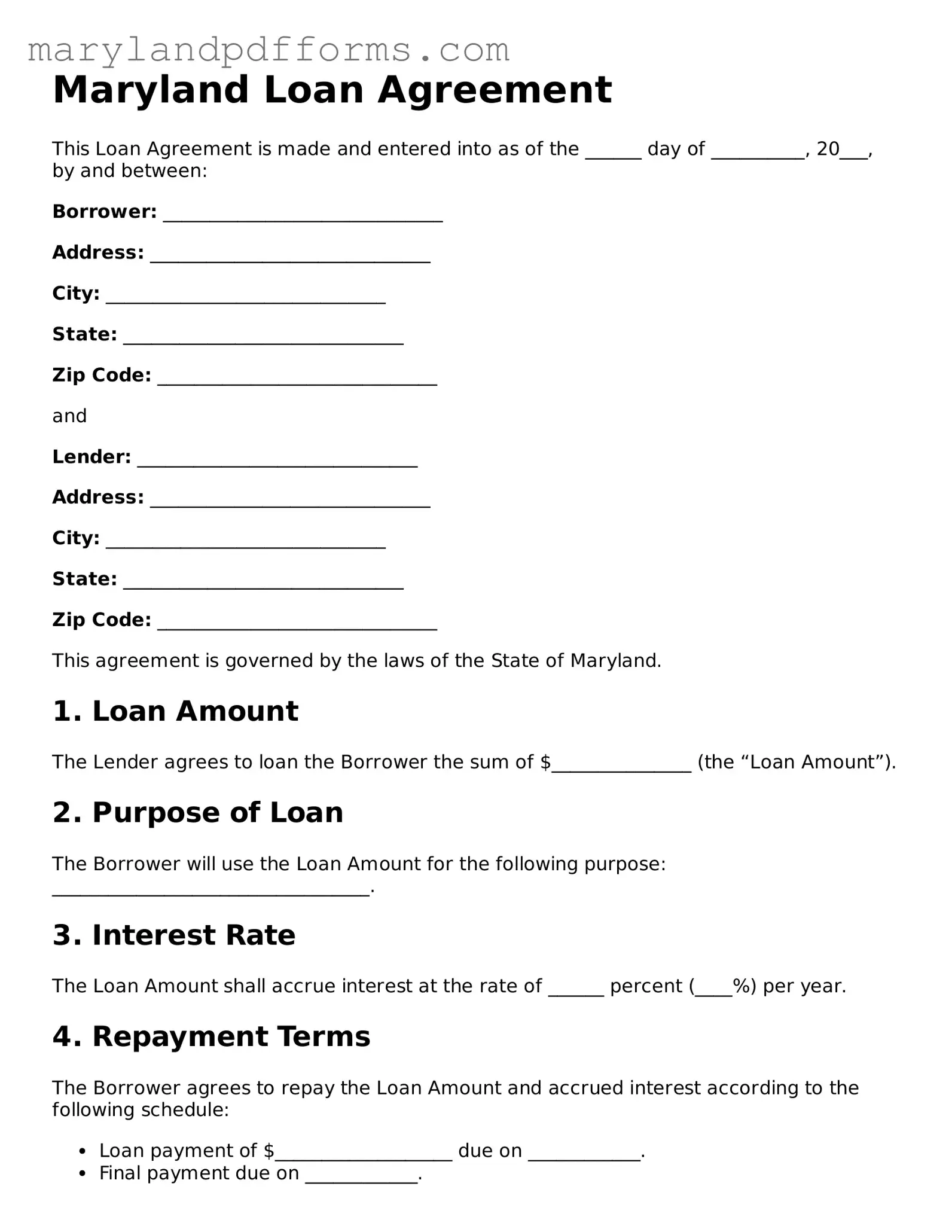A Maryland Loan Agreement form is a legal document that outlines the terms and conditions of a loan between a lender and a borrower in the state of Maryland. This form serves to protect the interests of both parties by clearly defining the repayment terms, interest rates, and any collateral involved in the loan.
This form is suitable for anyone who is lending or borrowing money in Maryland. Individuals, businesses, and organizations can all benefit from using this agreement to ensure that their financial transactions are documented and legally binding.
What are the key components of a Maryland Loan Agreement?
A comprehensive Maryland Loan Agreement typically includes the following components:
-
Loan Amount:
The total sum of money being borrowed.
-
Interest Rate:
The percentage charged on the loan amount, which can be fixed or variable.
-
Repayment Schedule:
Details on how and when the borrower will repay the loan.
-
Collateral:
Any assets pledged by the borrower to secure the loan.
-
Default Terms:
Conditions under which the borrower would be considered in default.
Yes, when properly executed, a Maryland Loan Agreement is legally binding. Both parties must sign the document, and it should be clear and comprehensive to ensure enforceability in a court of law. It is advisable to have the agreement reviewed by a legal professional to confirm its validity.
Can the terms of the loan be modified after the agreement is signed?
Yes, the terms of the loan can be modified, but both parties must agree to any changes. It is essential to document any modifications in writing and have both parties sign the amended agreement to maintain clarity and enforceability.
What happens if the borrower defaults on the loan?
If the borrower defaults, the lender has the right to pursue various remedies as outlined in the Loan Agreement. This may include demanding immediate repayment, taking possession of collateral, or pursuing legal action to recover the owed amount. The specific consequences of default should be clearly stated in the agreement.
Do I need a lawyer to draft a Maryland Loan Agreement?
While it is not legally required to have a lawyer draft a Loan Agreement, consulting with one is highly recommended. A legal professional can help ensure that the agreement complies with Maryland laws and adequately protects the interests of both parties involved.
Are there any specific laws governing loan agreements in Maryland?
Yes, loan agreements in Maryland are subject to both state and federal regulations. The Maryland Credit Grantor Closed End Credit Provisions and the Maryland Consumer Loan Law are examples of state laws that may apply. It is crucial to be aware of these regulations to ensure compliance.
Absolutely. A Maryland Loan Agreement can be used for personal loans between friends, family, or acquaintances. Having a written agreement helps prevent misunderstandings and provides a clear record of the terms agreed upon.
You can find Maryland Loan Agreement forms online through legal document websites, or you may choose to draft one from scratch using templates available in legal resources. It is important to ensure that any form you use meets the specific requirements of Maryland law.
